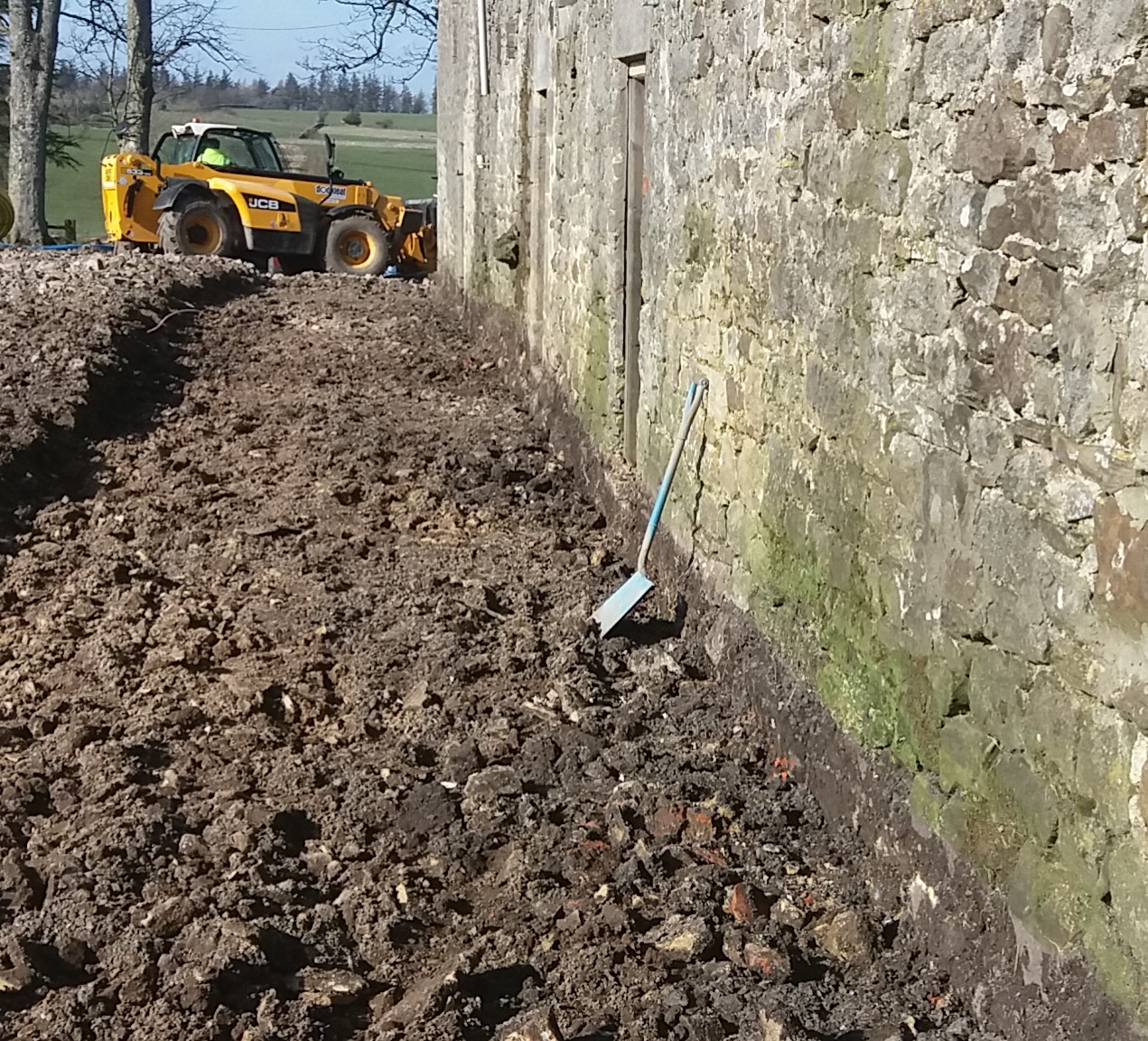ERGO were commissioned to undertake a Phase II Site Investigation on a farm in Chollerford, Northumberland, where the existing agricultural buildings were being converted to low rise residential housing. Following the Phase II works, a small area of contamination was identified, which ERGO assisted with the appropriate Remediation Strategy and subsequent Validation of the works.
Site Investigation and Remediation of Farm Conversion in Chollerford
Project Overview

Site Background
The earliest historical mapping indicates the site was occupied by a farmstead. Over time, there had been little change other than the addition of barns and no significant development around the site. Limited drift deposits were noted on the geological mapping.

Site Works
ERGO completed window sample probeholes and hand excavated trial pits to determine ground conditions and characterise the existing foundations. Generally, natural ground was encountered in exploratory holes, with a small area of contamination identified. ERGO then completed a Remediation Statement to detail how the contamination should be delineated and subsequently managed. ERGO also completed the validation works of the hotspot removal.
Key Issues and Solutions
Remediation schemes should be proportional to the context of the development and extent of contamination encountered. On this site, ERGO considered that a blanket clean cover system was not required (which would be costly to the client) when a much more pragmatic, cost-effective option was available to identify the full extent of the contamination and remove it. This was the preferred option, and the development was able to stick to the build schedule, with contaminated land conditions cleared prior to the earthworks to the satisfaction of the regulatory authorities.
